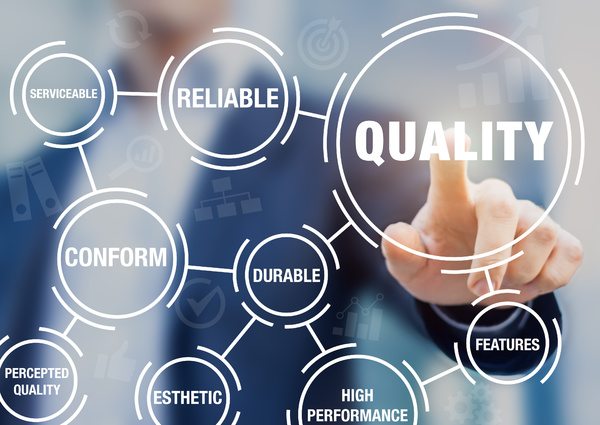Business leaders across virtually every industry are investing heavily in advanced analytics right now. There are plenty of good reasons for this: cloud analytics are becoming more and more powerful, computing costs continue to decline, and the volume and velocity of available good data continues to grow exponentially.

In the rush to adopt this powerful technology, though, there is an important caveat that business leaders must keep in mind. Just as advanced analytics have the power to produce extraordinarily valuable insights when they are fed the right information, they also have the power to mislead if they are fed with inaccurate, incomplete, or “bad” data.
Ask anyone who is involved with current business analytics initiatives, and they will likely agree on the necessity of having “good data.” In many cases, though, you will find that not everyone has a clear definition of what exactly that means.
To achieve the results you’re looking for in terms of trustworthy data that can be relied upon to make important business decisions, it is critical that you build data integrity into your processes from the very beginning. Data integrity is built upon for main pillars: integration, data quality, location intelligence, and data enrichment.
Read our Report
Data Quality Improves Business: The Data Differentiator
If your organization is embarking on a data analytics initiative, or if you plan to, Precisely can help. To learn more about this topic, download our free analyst report.
Breaking Down Your Business Silos
The first of these serves as an excellent starting point for discussion, primarily because so many companies still struggle with a lack of adequate integration. Historically, connecting a myriad of disconnected systems has been particularly challenging. Although integration technology has generally improved and most applications come with robust APIs that make it possible to read and write information with relative ease, there are also some countervailing trends that have made integration more difficult.
First, there is the proliferation of new software products in use at most companies. The era is over in which most organizations operated a few large, monolithic systems. Small, purpose-built software systems are helping businesses work better, faster, and more effectively. Best-of-breed is back. But this also means that there are more systems in use. There are more databases than ever before, each storing information about customers, prospects, products, vendors, and competitors.
That leaves companies with a few hard choices. Point-to-point integration can be extraordinarily expensive both to develop and to maintain. Yet leaving such systems disconnected is also a poor option because it results in siloed information that makes it impossible to develop a holistic picture of customers, vendors, or other subjects of interest to business leaders. Without the right enterprise integration tools, it can be difficult to develop a clear picture of the things that are important to you.
Data Quality: Garbage in, Garbage out
We have all heard the old expression “garbage in, garbage out”, or “GIGO” for short. Intuitively, most people think of this as a question of accuracy, that is, whether the data is correct or not. In fact, however, data quality extends much further than that. It includes additional factors such as consistency, completeness, and timeliness.

Consider, for example, a CRM system that stores information about customers and prospects for a wholesale distribution company. Presumably, customers who have purchased from this organization in the past will have a corresponding record in the company’s ERP database as well. If the business is also engaged in digital marketing initiatives, they may have yet another system for running email and social media campaigns.
In many companies, this is a common scenario. Moreover, it is a frequent source of data quality issues. If the customer record is entered into the CRM system differently than it appears in ERP, it will result in discrepancies (that is, inconsistencies) in the information across those two systems. Even if those two records match today, there is a possibility that one or the other will be updated (for example, with a new address or additional location), and that the update may not be reflected in the other system.
It’s also a very common scenario to have duplicate records describing the same customer. This is especially common in CRM databases, where sales prospects may be entered using slightly different company names, aliases, or DBAs. Information that is incomplete, or which does not conform to required formats, also presents significant challenges with respect to data quality.
Location Provides Context
Virtually every piece of data you might be able to think of can be connected to location in one way or another. When we are able to place a customer, a prospect, or a competitor somewhere in time and space, we can unlock a vast amount of new information. Property and casualty insurers, for example, are intensive users of location intelligence technology. When the exact location of an insured property can be determined with absolute confidence, underwriters can immediately gain access to over 9,000 additional data points about it. Many of those data points can be used to better understand risk, including things like the type of construction (e.g. wood or brick), roofing material used, proximity to water or combustible materials, and more.
Multiplying the Value of Your Data
In addition to location, advanced analytics can benefit greatly from data enrichment using externally sourced information. With the right data from reliable, authoritative sources, companies can develop a comprehensive 360° view of their customers. That, in turn, provides competitive advantage because it enables them to better understand each customer’s individual needs and preferences and to present them with the right messages at the right times.
A financial institution can develop valuable insights from understanding the family relationships and life events of its customers. A middle-aged couple with kids heading off to college, for example, might benefit from banking services that can help their young adult children establish a strong credit history and build good financial literacy skills. Aging retirees who own their own home and have limited liquid assets, in contrast, might be good candidates for a reverse mortgage.
By enriching your existing customer data with externally sourced authoritative information, you can develop the kinds of insights and programs that result in greater customer loyalty and increased sales.
If your organization is embarking on a data analytics initiative, or if you plan to, Precisely can help. To learn more about this topic, download our free analyst report, Data Quality Improves Business: The Data Differentiator.







